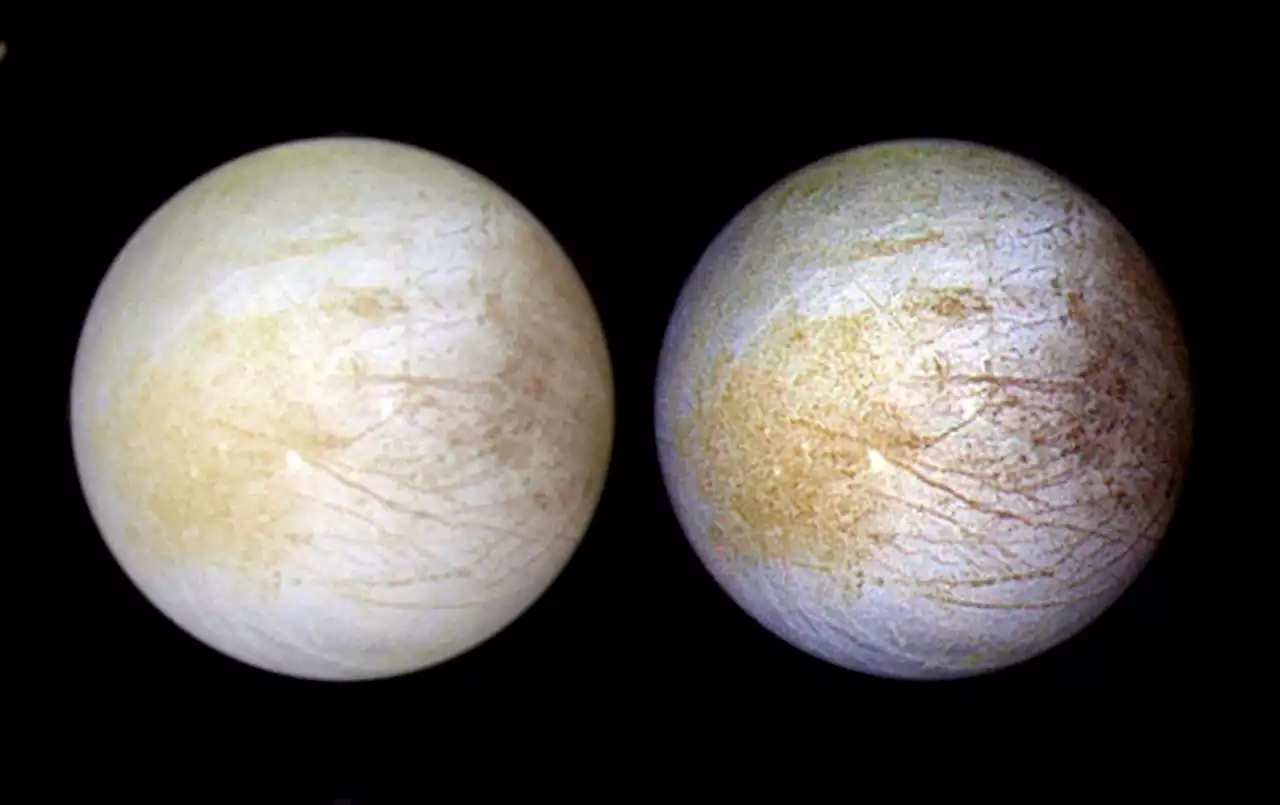Jupiter’s mysterious moon Europa may hold carbon in the ocean lurking beneath its icy shell
With just a glance at Jupiter’s small, icy moon Europa, the James Webb Space Telescope has bolstered the case that Earth is not our solar system’s sole habitable “ocean world.”
The brief observations used JWST’s Near-Infrared Spectrograph instrument, which is designed to capture spectra—barcodelike measurements that quantify the amount of light at different wavelengths, which scientists can translate into information about chemical composition, temperature and other characteristics of the light’s source.
“Look at our own ocean—it’s got lots of CO2 dissolved in it,” says Bonnie Buratti, a planetary astronomer at NASA’s Jet Propulsion Laboratory. Buratti is deputy project scientist on NASA’s Europa Clipper mission, which is scheduled to explore the icy moon during the 2030s, and she was not involved in either piece of new research.
“What we think is happening, when it comes to chaos terrain, is that at some point, the surface got warm enough to break up into these little ice rafts—in some cases, large ice rafts—so that the entirety of Tara Regio is these broken-up puzzle pieces floating around in this now-solidified icy, slushy matrix,” she says. Chaos terrain, she notes, is “a really good indicator of a location that you want to spend some more time looking at.
That logic makes sense to Martin, too. “It’s really a compelling argument to say the unique geologic thing that we observe here is probably related to the unique compositional thing that we see here,” she says.
United States Latest News, United States Headlines
Similar News:You can also read news stories similar to this one that we have collected from other news sources.
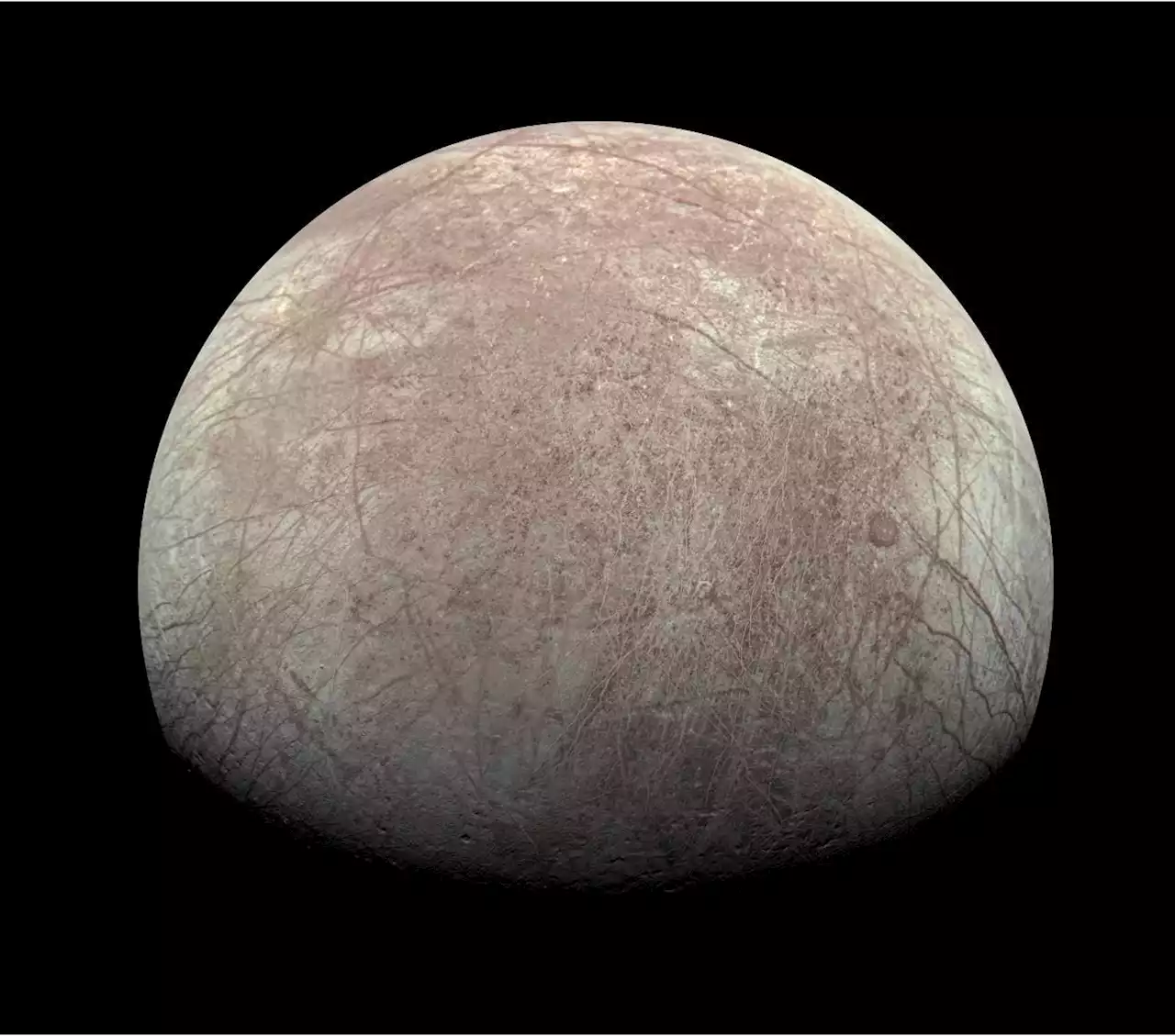 Webb Telescope: Ice On Jupiter’s ‘Wet Moon’ Europa Comes From A Hidden OceanData from the James Webb Space Telescope suggest that CO2 ice on Jupiter’s moon Europa is coming from its underground ocean—where extraterrestrial life could exist in theory.
Webb Telescope: Ice On Jupiter’s ‘Wet Moon’ Europa Comes From A Hidden OceanData from the James Webb Space Telescope suggest that CO2 ice on Jupiter’s moon Europa is coming from its underground ocean—where extraterrestrial life could exist in theory.
Read more »
 Hidden ocean the source of carbon dioxide on Jupiter moon: ResearchCarbon dioxide detected on Jupiter's moon Europa comes from the vast ocean beneath its icy shell, research using James Webb Space Telescope data indicated on Thursday, potentially bolstering hopes the hidden water could harbor life.
Hidden ocean the source of carbon dioxide on Jupiter moon: ResearchCarbon dioxide detected on Jupiter's moon Europa comes from the vast ocean beneath its icy shell, research using James Webb Space Telescope data indicated on Thursday, potentially bolstering hopes the hidden water could harbor life.
Read more »
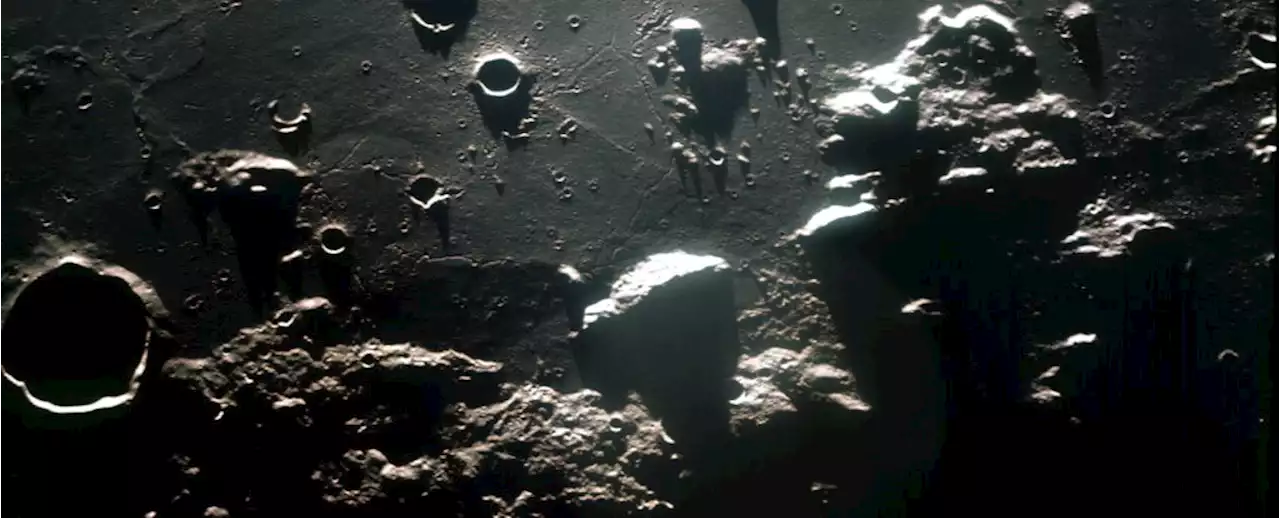 The Moon's Craters Might Contain Far Less Ice Than We HopedWe may have to rethink our plans for tapping into reserves of water on the Moon.
The Moon's Craters Might Contain Far Less Ice Than We HopedWe may have to rethink our plans for tapping into reserves of water on the Moon.
Read more »
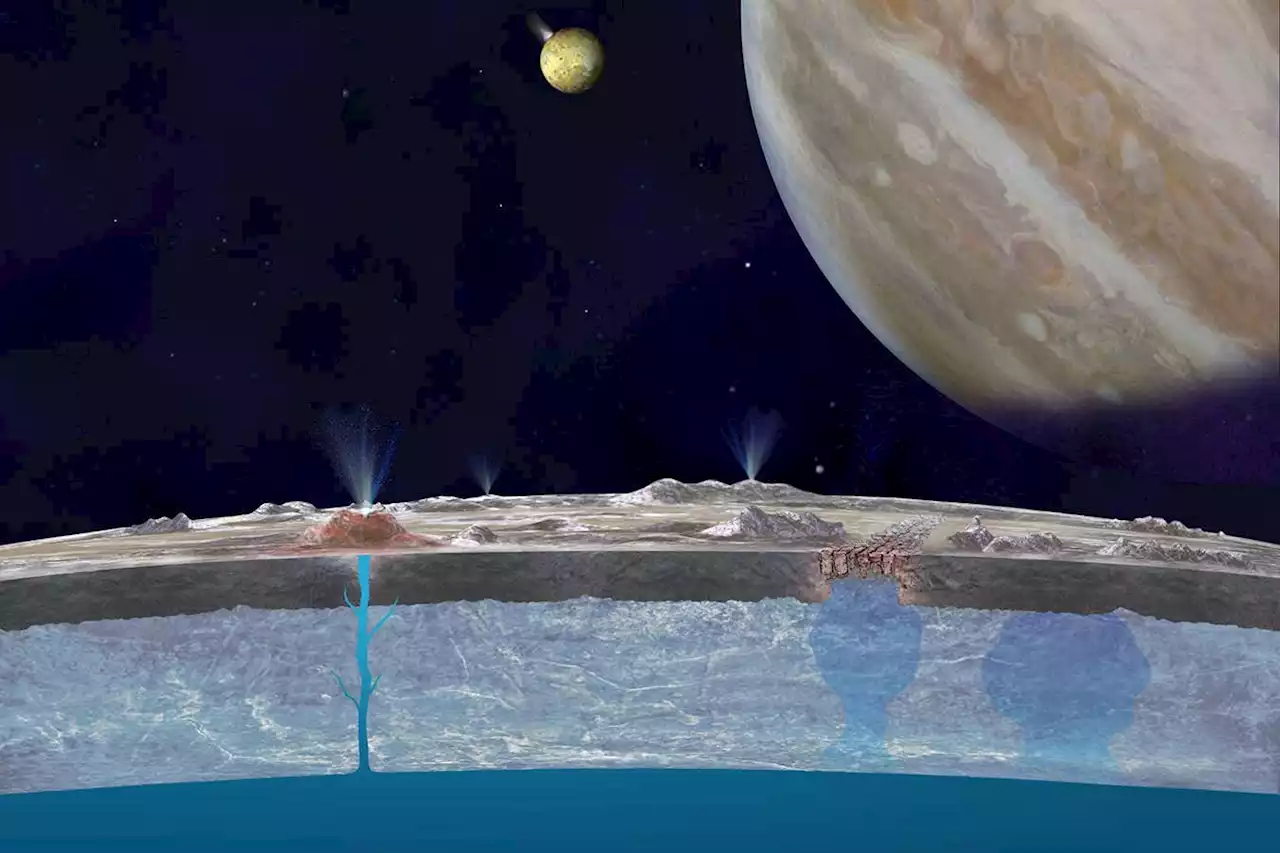 Europa’s underground ocean seems to have the carbon necessary for lifeObservations from the James Webb Space Telescope have shown carbon dioxide on the surface of Jupiter’s icy moon Europa – that’s a good sign for the habitability of its buried seas
Europa’s underground ocean seems to have the carbon necessary for lifeObservations from the James Webb Space Telescope have shown carbon dioxide on the surface of Jupiter’s icy moon Europa – that’s a good sign for the habitability of its buried seas
Read more »
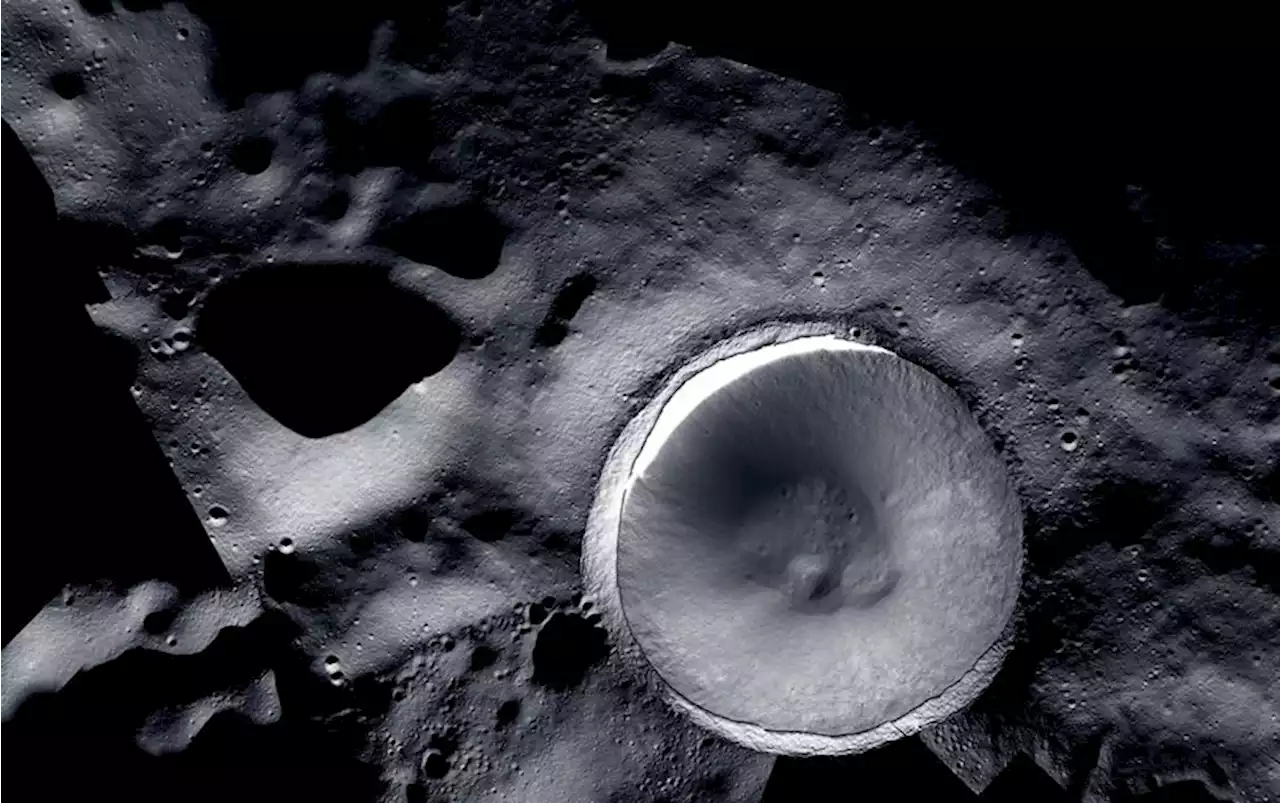 NASA’s Gorgeous New Moon Image Paints Shackleton Crater in Light and ShadowA new NASA instrument allows researchers to view the bright and permanently shadowed portions of the moon’s Shackleton Crater at the same time
NASA’s Gorgeous New Moon Image Paints Shackleton Crater in Light and ShadowA new NASA instrument allows researchers to view the bright and permanently shadowed portions of the moon’s Shackleton Crater at the same time
Read more »
 Half Moon Bay fishermen reeling from lost income amid salmon fishery closureCommercial salmon fishing season has been closed in California for the past several months and fishermen in Half Moon Bay are 'struggling just to try and survive.'
Half Moon Bay fishermen reeling from lost income amid salmon fishery closureCommercial salmon fishing season has been closed in California for the past several months and fishermen in Half Moon Bay are 'struggling just to try and survive.'
Read more »
